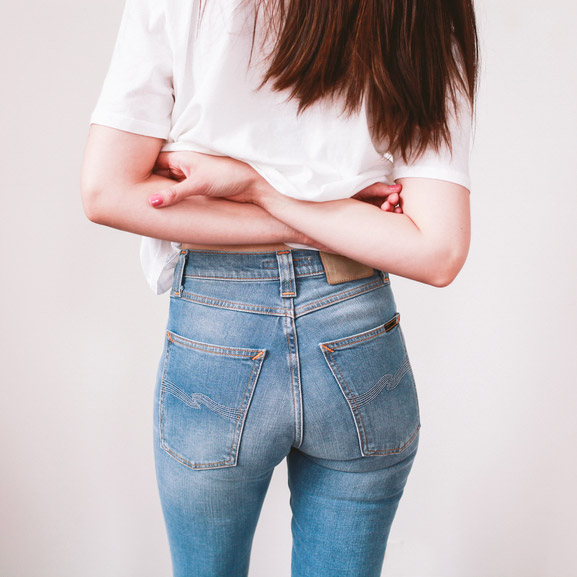Sick of that chicken skin on your upper arms? Find out why keratosis pilaris happens and the best ways to treat it.
Those hard, itchy bumps you hate looking at and touching is known as keratosis pilaris (AKA KP), and they can make anyone pretty self conscious and afraid to bare their arms. A friend of mine has KP on her upper arms and she can’t stand it. She dreads the idea of wearing anything that might put them on display. She’s even been to dermatologists who have prescribed various lotions and creams, and nothing has worked.
But she’s never really been the consistent kind of skin care person. She would use a treatment for a week or two and if she didn’t see any results she’d stop using it instantly. As with any skin care product, you’ve got to give it time to work. I know it sucks, but your body has thicker skin than your face and it takes even more time for products to work. Find out how to truly get rid of kerotasis pilaris for good below.
What is keratosis pilaris and what causes it?
Keratosis pilaris is a skin condition that occurs when keratin (the main building protein for our hair, skin and nails) clogs the hair follicles, leading to patches of bumps with a rough, “chicken skin”-like appearance. It usually occurs most often on the upper arms and thighs but can appear in other places as well.
KP happens for many reasons, including genetics, dry skin, and even as a result of having asthma or eczema, so it isn’t really something you can prevent. Those with dry skin are especially prone because this means their natural exfoliating cycle is slower, leading to more instances for dead skin cells to get trapped and form new bumps. Truth be told, dermatologists don’t have a solid answer as to why this happens but there are several treatment suggestions you can use to keep this condition in check.
How to treat it?
When it comes to KP, exfoliating is a necessity, but don’t go and grab your favorite body scrub. Physical exfoliation tends to irritate keratosis pilaris, causing redness and ultimately making the condition worse. Instead reach for chemical exfoliators since they will help to unclog those pores for smoother skin without any inflammation.
As I mentioned earlier, the skin on our bodies is much thicker and tougher than our face, so to get the best results reach for an exfoliator with 10-15% of acids in it. For those without sensitive skin, try using the Amlactin Daily Moisturizing Body Lotion, which contains 12% lactic acid that will help to speed up the skin’s renewal process while also hydrating the skin.
Another great option for sensitive skin is the Banila Co Hi Bye Vita Peel Exfoliating Scrub. This exfoliator is packed with AHAs to really deep clean those pores. There are different types of exfoliators like this on the market, but if you notice any peeling or irritation, this is a sign you might be over-exfoliating. Try switching to every other day use so your body has a chance to get used to the product first.
Keep in mind that these acidic lotions will leave you more sensitive to the sun, which means it’s a necessity to layer SPF on afterwards for proper protection.
Bottom line:
There’s no one cure for keratosis pilaris, but using body lotions with chemical exfoliators in them will help to get it under control. This can only be maintained if you consistently use these products on a regular basis (even when the condition has calmed down). With your consistent use, you’ll help your skin to avoid the buildup of dead skin cells so KP doesn’t have a chance to form and return.
For those with severe cases (when these lotions aren’t working after one to two months), head to your dermatologist. She or he will have laser treatments available that can help reduce redness and inflammation, which will help those annoying bumps get treated more effectively.
